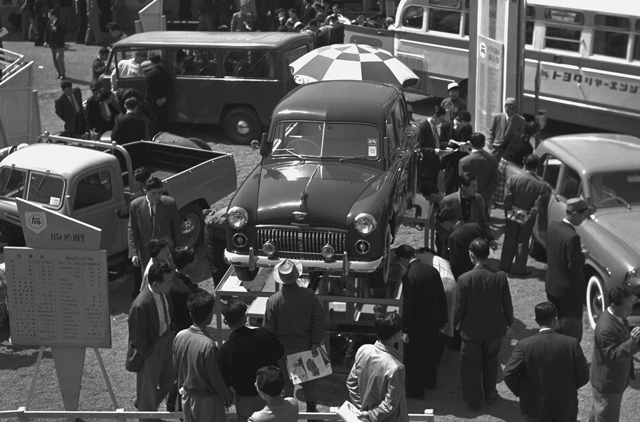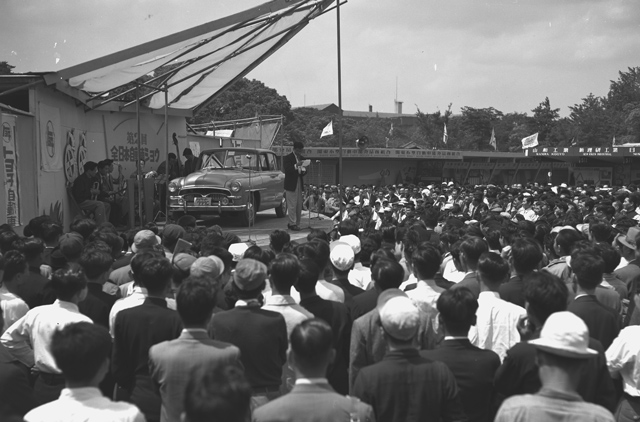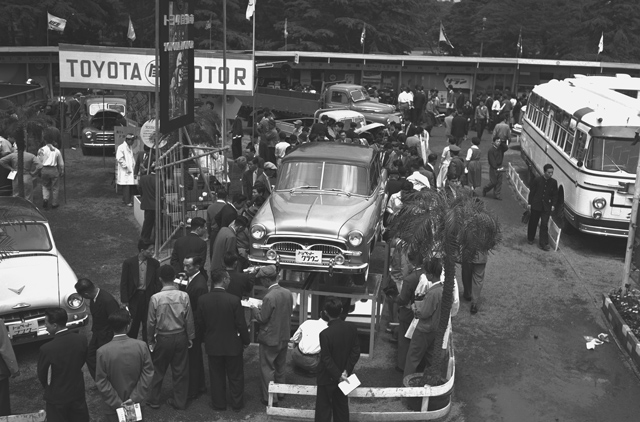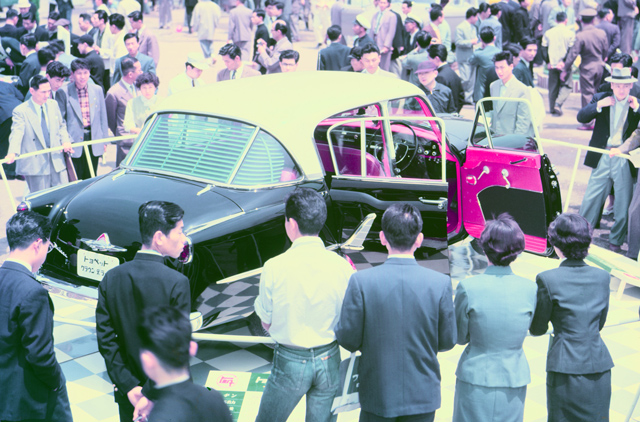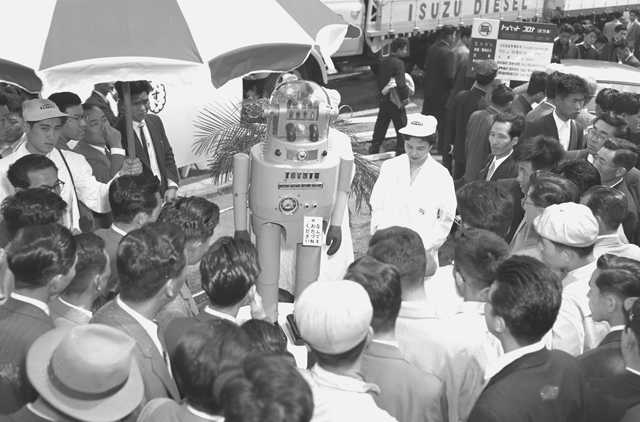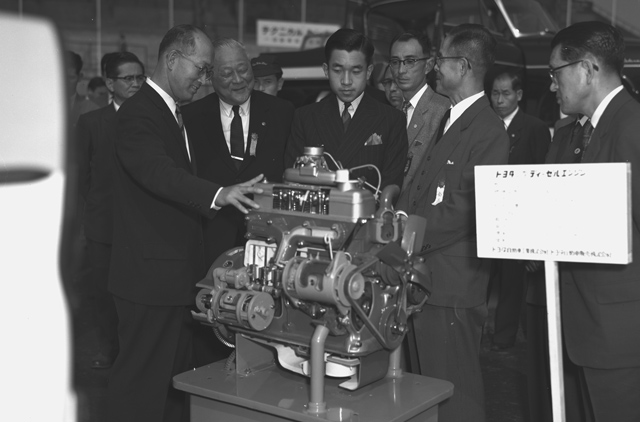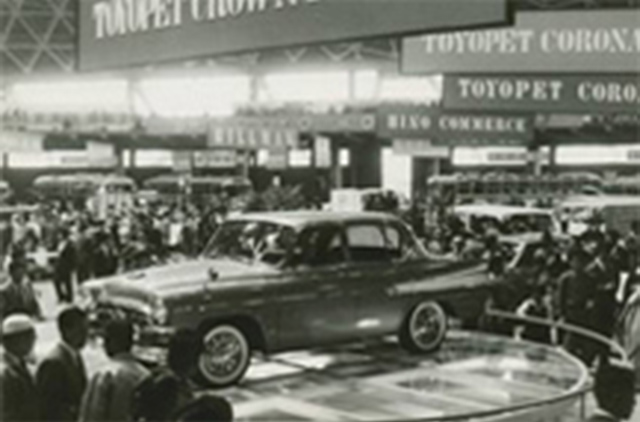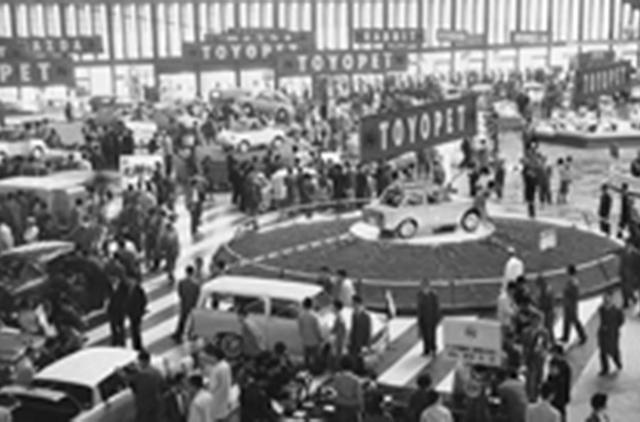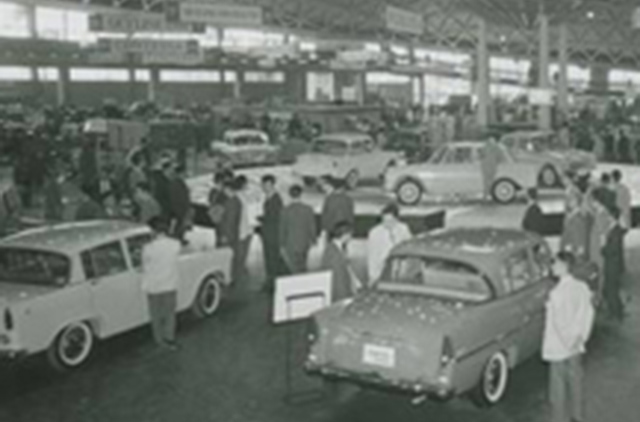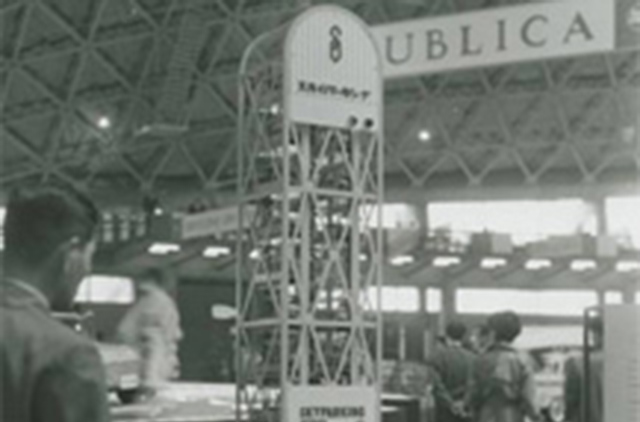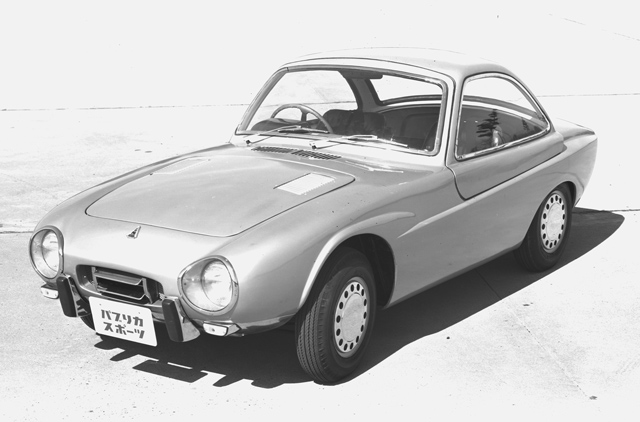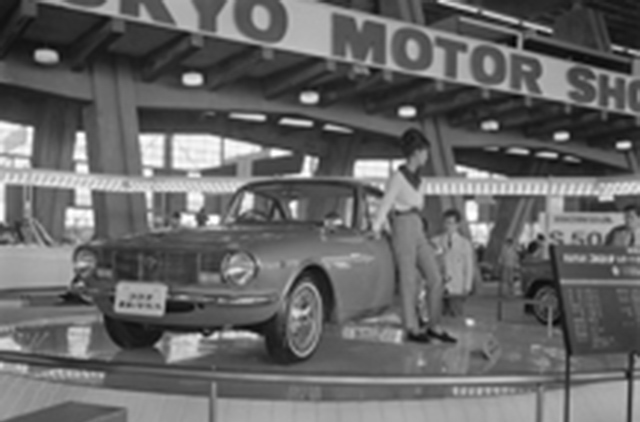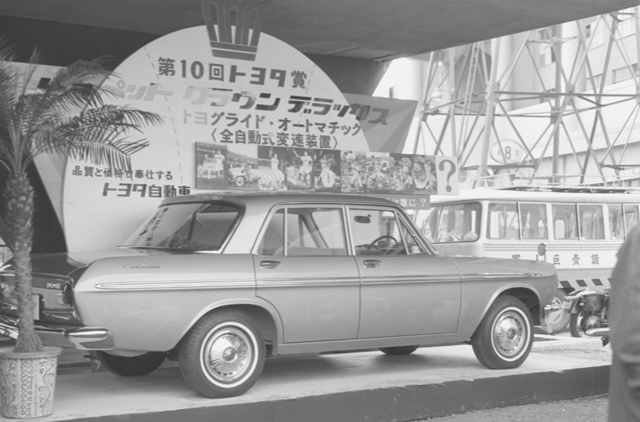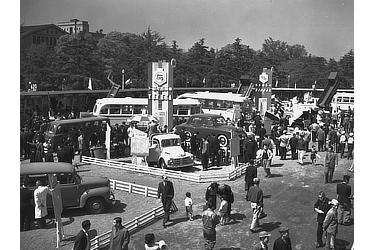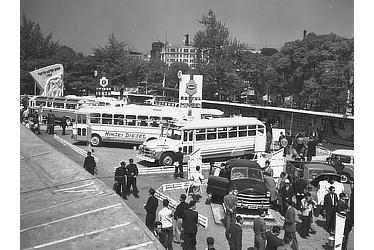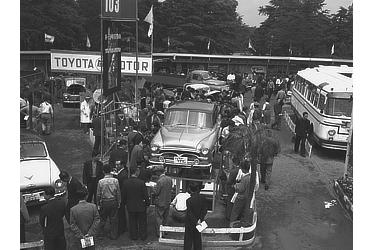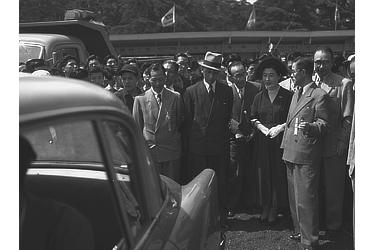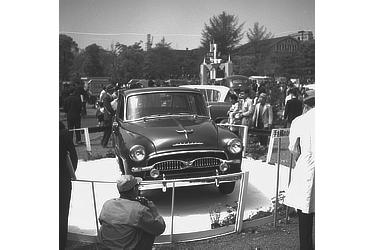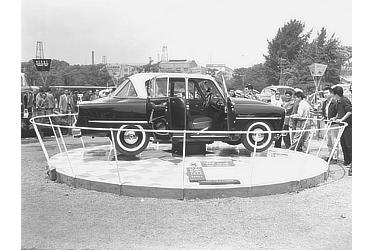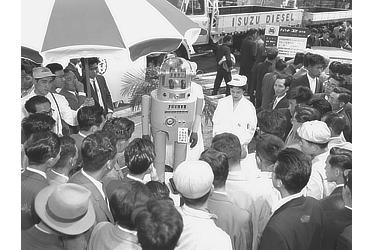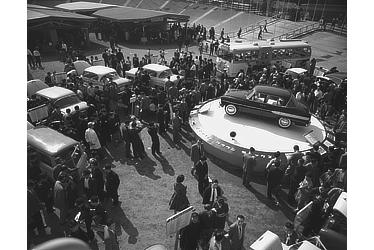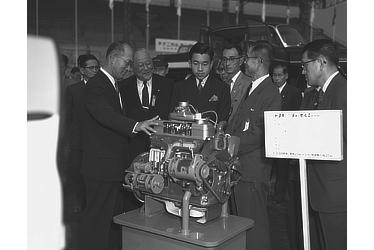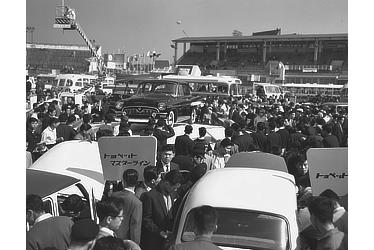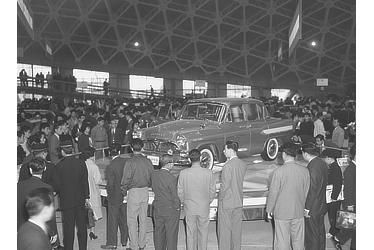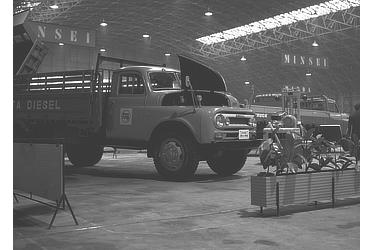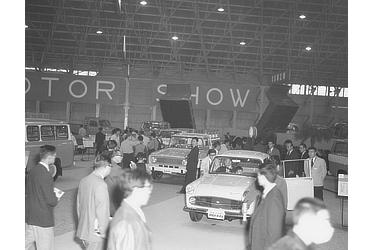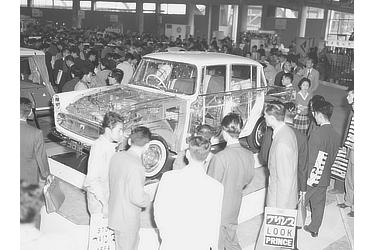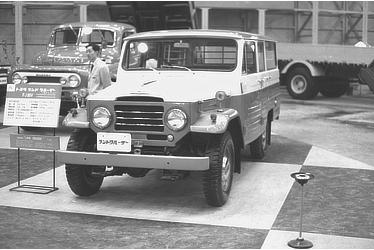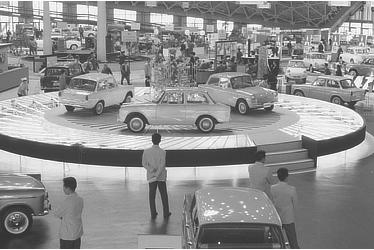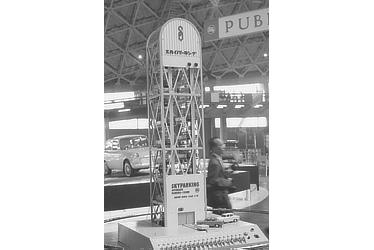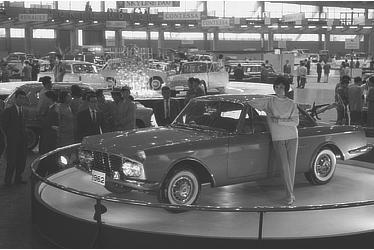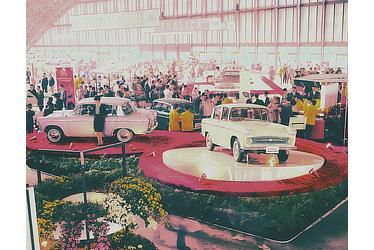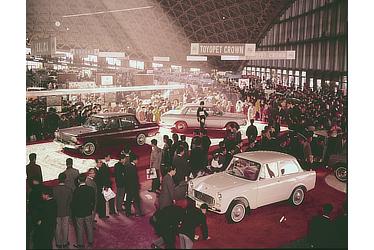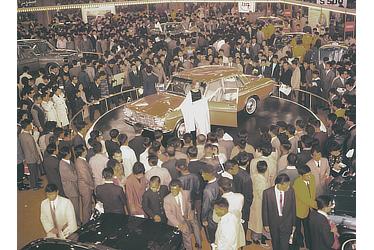1954The 1st Tokyo Motor Show (All-Japan Motor Show)
Of the 267 vehicles exhibited at the show, only 17 were passenger cars, attesting to the high demand for commercial-use vehicles at the time.
The Motor Exposition that had regularly been held by the Nikkan Jidosha Shimbun until 1953 was discontinued, and was reborn as the All-Japan Motor Show (Zennihon Jidosha Show, officially called the Tokyo Motor Show in English) the following year.
1955The 2nd Tokyo Motor Show (All-Japan Motor Show)
The introduction of the Crown and small 4-wheeled trucks heralded the age of Japanese-made passenger cars and a shift from 3- to 4-wheeled trucks.
1956The 3rd Tokyo Motor Show (All-Japan Motor Show)
The "people's car" concept announced by the Ministry of International Trade and Industry (then) in May 1955 shifted the attention of visitors from commercial-use vehicles to passenger cars.
Starting this year, the vehicles on show were grouped together by category (passenger car, truck, etc.), rather than by manufacturer which was the previous norm.
1957The 4th Tokyo Motor Show (All-Japan Motor Show)
The show secretariat's office put up a sign that read "Automobile Information Room," reflecting the fact that the show was becoming an occasion for sales rather than a mere exhibition.
1958The 5th Tokyo Motor Show (All-Japan Motor Show)
There was a visible increase of foreign visitors, probably reflecting the start of the Japanese passenger car export to the U.S. earlier in the year. The venue switched from the Hibiya Park to the Korakuen Velodrome, and the show shifted from spring to fall.
1959The 6th Tokyo Motor Show (All-Japan Motor Show)
Toyota exhibited a small, high-speed diesel engine that had a potential to open up a new market for passenger cars. The venue was moved indoors to the Harumi Fairgrounds.
1960The 7th Tokyo Motor Show (All-Japan Motor Show)
The business environment for the Japanese auto industry began to change drastically this year, with the introduction of trade and foreign exchange liberalization policies and the commencement of an imported car show in Japan.
1961The 8th Tokyo Motor Show (All-Japan Motor Show)
Reflecting the general surge in consumption, sports cars and other items were exhibited.
At the Toyota booth, the Toyopet Sports Car attracted visitors' attention. Many manufacturers exhibited passenger cars under 1,000 cc.
1962The 9th Tokyo Motor Show (All-Japan Motor Show)
Reflecting the rising public interest in automobiles, the number of visitors exceeded the one million mark. Sports cars and convertibles were particularly popular. The trade liberalization scheduled to be implemented in two years also stirred the enthusiasm of exhibitors.
1963The 10th Tokyo Motor Show (All-Japan Motor Show)
The focus of the show shifted to passenger cars.
Toyota exhibited the Crown Eight fitted with the first Japanese-made V8 engine, along with Crown, Corona, and Publica convertibles, demonstrating the harmony of luxury and sportiness.





